Marine Protected Areas, Protected Magazine
Lady Elliot Island: An Example of Effective Habitat Restoration
Island history
Lady Elliot Island is the most southern coral cay in the Great Barrier Reef with an area of around 40Ha. Owned by the Federal Government, the island is located 85 km off the Queensland coast, with the closest regional towns being Bundaberg and Hervey Bay.
Lady Elliot Island is located within the ‘Green Zone’ of the Great Barrier Reef Marine Park, with fishing and collecting prohibited. The island is a striking and leading example of habitat rehabilitation and restoration from a largely cleared and denuded landscape.
This article outlines what has been achieved, and what has been critical in shaping such a successful and effective program in a sensitive, highly ecologically significant location.
Lady Elliot Island first appeared above sea level roughly 3,500 years ago. Sea birds landed on the bare coral cay bringing with them the seeds necessary to establish vegetation on the island. Although the island was discovered by Europeans in 1816, real activity and vegetation clearing began in 1863 with the start of guano mining.
Guano miners first appeared on the island in 1863 and remained for a decade. Guano formed from the excrement of seabirds, and was mined for use as a fertilizer. The destructive practice of extracting the guano resulted in the removal of all vegetation. The island was bare and denuded, with around 1 – 1.5m metres of material removed due to guano mining. In addition, goats were introduced on the island as a food source for stranded sailors.
Unfortunately, this prevented the establishment of any new growth, resulting in a barren island largely devoid of vegetation until the late 1960’s.
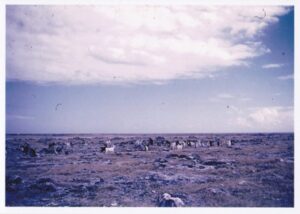
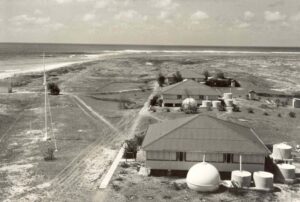
Although revegetation started in the late 1960’s, rehabilitation work has ramped up since 2018, with the Great Barrier Reef Foundation providing $3m of funding over 7 years through their Reef Islands Initiative.
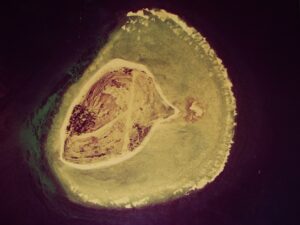
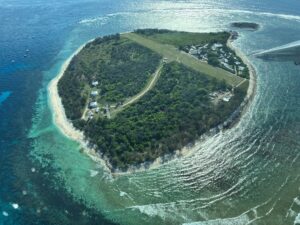
The rehabilitation program Planting stocks are propagated in the island’s nursery from cuttings and seed sourced from the island and other southern GBR Coral Cays to strengthen the genetic diversity of the vegetation communities.
The delivery of the rehabilitation program is based on a mosaic approach, with four habitat areas reflecting specific ecosystems and dominant vegetation species. A percentage of each habitat area is worked on annually. Key habitat areas are: Grasslands (especially as habitat for ground-nesting seabirds), shrubland; coastal zone with casuarina/pandanus and octopus bush; and pisonia forest (key bird nesting habitat).
Although revegetation started in the late 1960’s, rehabilitation work has ramped up since 2018, with the Great Barrier Reef Foundation providing $3m of funding over 7 years through their Reef Islands Initiative.
The rehabilitation program
Planting stocks are propagated in the island’s nursery from cuttings and seed sourced from the island and other southern GBR Coral Cays to strengthen the genetic diversity of the vegetation communities. The delivery of the rehabilitation program is based on a mosaic approach, with four habitat areas reflecting specific ecosystems and dominant vegetation species. A percentage of each habitat area is worked on annually.
Key habitat areas are: Grasslands (especially as habitat for ground-nesting seabirds), shrubland; coastal zone with casuarina/pandanus and octopus bush; and pisonia forest (key bird nesting habitat). A challenge specific to the island is its remote location and isolation, which result in elevated costs. Development of a small scale resort on the island has given access to power, water, accommodation and some equipment, including a front-end loader which has been very effective with weed removal.
Central to the restoration program is a permanent program manager and volunteers due to the amount of hands on work required volunteers sign up to spend 7 days on the island, and work on the rehabilitation program for 30 hours of work over 5 days.
The program pays for flights to the island, accommodation and food. Day 1 after arrival includes induction and a tour of the island. Time is made available for a (free) glass-bottom boat tour of the coral reefs, and exploration of the island and coral reefs after work.
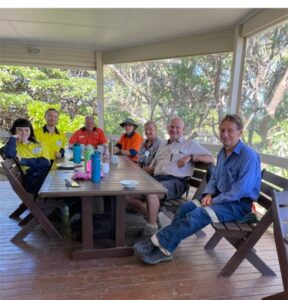
The results
Jim Buck, the Ecosystem Management Officer overseeing the program says “I’m seeing results in 4 ½ years that I didn’t think I’d see in my lifetime”.
Regrowth has been helped over the past few years by good rainfall patterns from the La Nina weather system. The nutrient levels of the soil are high compared to other coral cays, so they are quite productive.
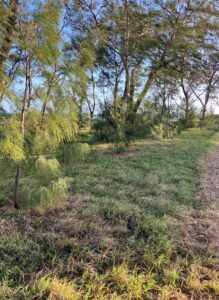
The island now supports over 200,000 birds in season, with 100,000 birds nesting on the island during the breeding season. Over 100 bird species have been sighted, which makes the island one of the highest seabird diversity of any island within the Great Barrier Reef.
Many of the seabirds had vanished from the island prior to revegetation. Iconic bird species include the Bar Tailed Godwit, with the longest flight annually from Alaska to the island, without stopping to rest or feed. The Black Noddy has only nested on the island since the late 1980’s. Now over 30,000 pairs are sighted at the start of the nesting season in September. The Red-tailed Tropic Bird is only found on one other island in the Great Barrier Reef.
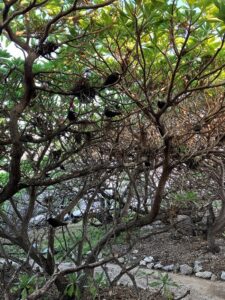
effectively co-existing with island visitors
Over 120 introduced plant species are being managed for removal. A key flora species is Pisonia grandis, which now covers 30% of the island after 5 years of planting.
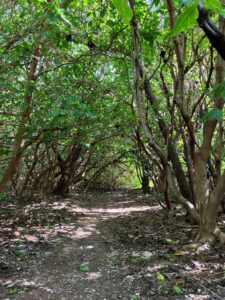
The success of the restoration work on Lady Elliot Island has been due to some key factors – the vision and passion of those involved, a practical and clear plan for rehabilitation work, and appropriate resources (people, equipment, plants) to allow long term planting, monitoring and follow-up management.
These are factors in nearly all rehabilitation programs – but to see the impacts of putting them into practice is very motivating. This story shares the knowledge and insights gained from experience, and demonstrates what’s possible.


